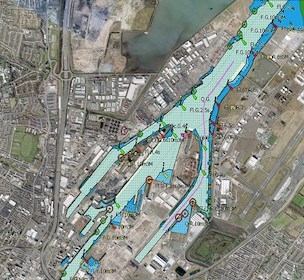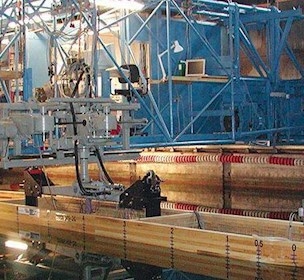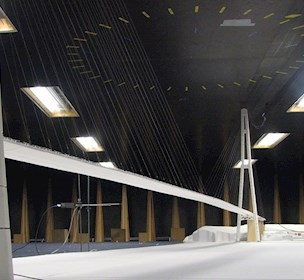Optimise and verify Offshore Wind Support Vessels
Ensure vessels excel in energy efficiency and safe operation, thanks to advanced CFD simulations and ship model testing.
Computational services and testing facilities help optimise and verify fuel-efficient vessel design
Designing fuel-efficient vessels with minimal environmental impact is a complex task. To meet these challenges, computational services and testing facilities play a crucial role in optimizing and verifying vessel designs. Key considerations include:
- Eco-friendly design is essential for ship designers, shipyards, shipping companies, and offshore wind supply vessel owners.
- Safety and efficiency are top priorities, especially for Wind Turbine Installation Vessels (WTIVs), Commissioning Service Operation Vessels (CSOVs), and Crew Transfer Vessels (CTVs).
- Seakeeping and maneuvering
Optimization with CFD simulations and towing tanks ensures energy efficiency, good seakeeping properties, manoeuvrability, and crew comfort.
Every kind of offshore wind vessel can be tested and optimised at our facility
We can optimise vessel design, manoeuvring and seakeeping through computational fluid dynamics (CFD), windtunnel assessment and towing tank testing:

Navigate in the complexity of Offshore Wind Vessel design with confidence
From optimizing fuel efficiency to ensuring operational safety, we’re here to help you every step of the way.
Optimise vessel designs
With computational tools, we can enhance vessel designs optimization in relation to fuel consumption, maneuvering and seakeeping, thereby focusing the time needed for tank testing on the final design verification and enabling informed decision-making.
Testing facilities providing realistic conditions
Our ship model testing facilities provide realistic conditions to assess the vessel's behaviour in terms of powering, manoeuvering, and seakeeping under normal operations as well as under extreme weather, waves, and current conditions.
Enhance efficiency and performance
Our wind tunnels optimise aerodynamic designs, enhancing efficiency and performance based on assessments of wind and current loads.Environmental Impact Assessments
Understanding and mitigating the environmental impact of maritime operations is crucial for sustainable development. Environmental impact assessments (EIAs) help evaluate the potential effects of vessel operations on maritime ecosystems, air quality, and costal environments. Through advanced CFD simulations and testing in towing tanks, we analyse and optimise propulsive power and fuel efficiency to ensure reduced fuel consumption and emissions in compliance with environmental regulations and promote eco-friendly vessel designs. By integrating EIAs into the design and operational phases, our clients can minimize ecological disruption and support a greener maritime industry.
FAQ
Get in touch to book a free consultation

Related content

Simulation studies for maritime operations
/Service
Simulation studies to validate the layout of a port or terminal before the construction begins.

Hydrodynamics
/Page
Facilities for hydrodynamic testing of ships and offshore structures.

Wind tunnels
/Facility
5 wind tunnels for investigations of issues related to civil engineering, offshore and structures.
